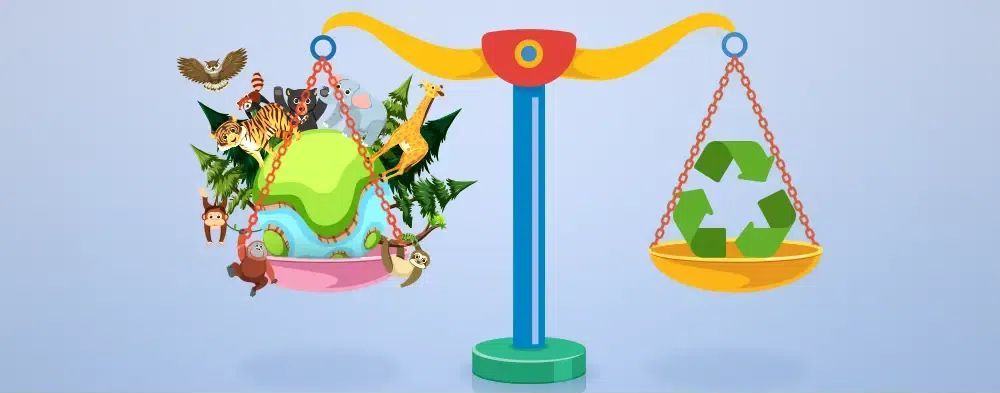Author: Tejashwini Verma, Patna Law College
Abstract
The judiciary’s role in environmental law has significantly transformed over the years. This evolution is marked by the judiciary’s proactive stance in safeguarding the environment, often stepping in to fill legislative and executive gaps. The courts have interpreted laws and laid down principles and guidelines that have shaped environmental jurisprudence in India. This article examines the judiciary’s evolving role in environmental law, focusing on landmark case laws, legal doctrines, and the impact of judicial activism on environmental protection.
Introduction
Environmental degradation poses one of the most significant challenges to sustainable development. As environmental issues have escalated, so too has the judiciary’s involvement in addressing these challenges. The Indian judiciary, in particular, has played a pivotal role in the evolution of environmental law, moving beyond mere interpretation of statutes to actively shaping environmental policies through judicial innovation and activism.
The Judiciary’s Expanding Role
The judiciary’s role in environmental law can be traced back to the early 1980s, coinciding with growing awareness of environmental issues globally. Initially, courts were limited to interpreting existing environmental laws, such as the Air (Prevention and Control of Pollution) Act, 1981, and the Water (Prevention and Control of Pollution) Act, 1974. However, as environmental challenges became more complex, the judiciary began to adopt a more proactive role.
Public Interest Litigation (PIL)
One of the most significant developments in environmental law has been the use of Public Interest Litigation (PIL). The liberalization of locus standi allowed individuals, groups, and organizations to file petitions on behalf of those who were unable to do so, making it easier for environmental issues to be brought before the courts. This shift marked the judiciary’s transition from a passive interpreter of laws to an active participant in environmental governance.
Judicial Activism and Environmental Principles
The judiciary has played a crucial role in developing and enforcing environmental principles such as the “polluter pays” principle, the “precautionary principle,” and the concept of sustainable development. These principles have been incorporated into Indian jurisprudence through landmark judgments, often filling the gaps left by inadequate or outdated legislation.
Polluter Pays Principle: This principle asserts that the polluter should bear the costs of pollution prevention and control. It was first articulated by the Supreme Court in the case of the Indian Council for Enviro-Legal Action v. Union of India (1996), where the court held that the polluting industry must bear the responsibility for remediation of the environmental damage caused.
Precautionary Principle: The precautionary principle mandates that in the case of environmental risks, lack of scientific certainty should not be used as a reason for postponing measures to prevent environmental degradation. The Supreme Court emphasized this principle in Vellore Citizens’ Welfare Forum v. Union of India (1996), where the court held that the state must anticipate, prevent, and attack the causes of environmental degradation.
Sustainable Development: The concept of sustainable development, which seeks to balance economic growth with environmental protection, was reinforced in Narmada Bachao Andolan v. Union of India (2000), where the court held that development should not be at the cost of environmental degradation and that environmental protection is an integral part of the right to life under Article 21 of the Constitution.
Case Laws: Judicial Landmark and Recent Judgments
The Indian judiciary has delivered several landmark judgments that have significantly impacted environmental law and governance. These judgments have not only expanded the scope of environmental law but also established new legal doctrines and principles.
M.C. Mehta v. Union of India (1987): This case, often referred to as the Oleum Gas Leak Case, is a milestone in Indian environmental law. The Supreme Court introduced the principle of absolute liability, holding that enterprises engaged in hazardous activities are liable for any harm resulting from those activities, even without proof of negligence. This case laid the foundation for strict environmental liability in India.
T.N. Godavarman Thirumulpad v. Union of India (1997): This case marked the beginning of the Supreme Court’s continuous monitoring of environmental issues through what became known as the “Forest Bench.” The court issued several interim orders to protect forest cover and wildlife, demonstrating its commitment to environmental conservation.
M.C. Mehta v. Kamal Nath (1997): In this case, the Supreme Court applied the public trust doctrine, holding that the state is the trustee of all natural resources, that are meant for public use and enjoyment. The court ruled that the government had no right to transfer public resources to private entities if it would harm the environment.
Sterlite Industries (India) Ltd. v. Union of India (2013): The Supreme Court’s decision in this case underscored the importance of environmental impact assessments (EIA) and compliance with environmental norms. The court imposed a hefty fine on Sterlite Industries for causing environmental damage due to non-compliance with EIA regulations, reiterating the “polluter pays” principle.
Amazon vs. Future Group (NGT Case) – 2023
This case involved the environmental impact assessment (EIA) process regarding large-scale infrastructure projects by retail giants, such as Amazon’s warehouses. The National Green Tribunal (NGT) ruled that environmental clearances must take into account the wider impact on land, water, and air caused by such projects. The decision emphasized that corporate responsibility should include sustainable environmental practices and a clear commitment to reduce the carbon footprint of mega commercial projects. The ruling reinforced the importance of EIAs for commercial infrastructure projects, further embedding sustainable development practices into corporate strategies. This case also highlighted the growing attention to the carbon footprint of the retail industry in India.
This case revolved around industrial discharges polluting water bodies in Maharashtra. The Supreme Court held several industries accountable for contaminating the water in rivers, especially the Godavari, and imposed stringent fines and penalties. The industries were directed to clean up the pollution and install waste treatment plants to prevent further environmental damage.
This case set a strong precedent for holding industrial companies accountable for environmental degradation and emphasized the need for strict enforcement of pollution control norms.
The Proof: Empirical Evidence and Impact
The judiciary’s proactive role in environmental law has led to significant improvements in environmental governance in India. The establishment of the National Green Tribunal (NGT) in 2010 is a testament to the judiciary’s influence. The NGT was created to handle environmental cases expeditiously, and it has since become a vital institution in enforcing environmental regulations and adjudicating environmental disputes.
Empirical studies have shown that judicial interventions have led to better compliance with environmental laws and greater accountability among polluters. For instance, the Supreme Court’s interventions in Delhi’s air pollution crisis resulted in the adoption of cleaner fuels and stricter emissions standards, leading to a noticeable improvement in air quality.
Conclusion
The judiciary’s role in environmental law has evolved from a passive interpreter of statutes to an active guardian of environmental rights. Through landmark judgments, the courts have not only enforced existing laws but have also created new legal doctrines that have shaped the course of environmental jurisprudence in India. The judiciary’s proactive stance has been instrumental in filling legislative gaps, ensuring compliance with environmental regulations, and protecting the fundamental right to a healthy environment. However, the evolving nature of environmental challenges calls for continued judicial vigilance and innovation to ensure sustainable development and environmental protection.
FAQs
Q1. What is the significance of the “polluter pays” principle?
The “polluter pays” principle is a key environmental law principle that holds that the party responsible for causing pollution should bear the costs of managing and mitigating that pollution. It ensures that the financial burden of environmental damage does not fall on society at large but on the polluter.
Q2. How has the judiciary contributed to environmental protection in India?
The judiciary has played a crucial role in environmental protection by interpreting and expanding the scope of environmental laws, developing legal principles such as the “precautionary principle” and “sustainable development,” and enforcing compliance with environmental regulations through landmark judgments.
Q3. What is the role of Public Interest Litigation (PIL) in environmental law?
Public Interest Litigation (PIL) has allowed individuals and organizations to file cases on behalf of those who are unable to do so, making it easier to bring environmental issues before the courts. PIL has been a powerful tool for environmental advocacy and has led to several landmark judgments in environmental law.
Q4. What is the National Green Tribunal (NGT)?
The National Green Tribunal (NGT) is a specialized judicial body established in 2010 to handle environmental disputes and cases in India. It is responsible for ensuring the expeditious disposal of environmental cases and enforcing environmental laws and regulations.
Q5. How have judicial interventions impacted environmental governance in India?
Judicial interventions have led to better compliance with environmental laws, greater accountability among polluters, and the adoption of cleaner technologies and practices. The judiciary’s proactive role has significantly improved environmental governance and contributed to the protection of environmental rights in India.





